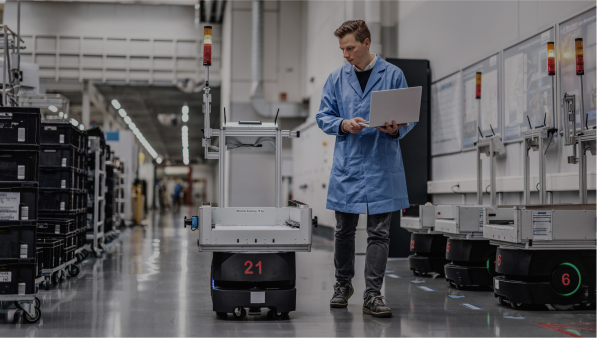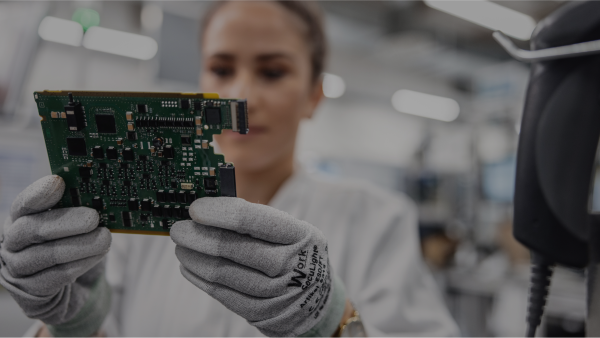From traditional assembly lines to highly interconnected, data-driven factories, automation is revolutionising the way products are manufactured.
Several factors are accelerating the adoption of automation in manufacturing, including:
Increased efficiency and productivity: Automation can significantly reduce labour costs, improve production speed and minimise downtime.
Improved quality and consistency: Automated systems can deliver consistent product quality, reducing defects and rework.
Enhanced flexibility: Modern automation technologies enable manufacturers to quickly adapt to changing market demands and product variations.
Data-driven decision-making: Automation generates vast amounts of data that can be analysed to optimise processes, improve efficiency and identify potential issues.
Labour shortages: In many regions, the availability of skilled labour is limited, making automation a viable solution.
Emerging technologies
DigiKey has been keeping a close eye on the impact various technologies have had or will have on the future of manufacturing.
Robotics, artificial intelligence, the Internet of Things and augmented reality are all helping to usher in a new era of manufacturing.
Robotics
Advanced robotic systems can perform tasks with greater precision and complexity than ever before. Collaborative robots (cobots), autonomous mobile robots (AMRs) and automated guided vehicles (AGVs) will all continue to grow in popularity.
AMRs provide the ability to work around tight spaces where toxic chemicals and heavy machinery can be a danger to humans. Utilising sensors, machine vision and artificial intelligence, they are capable of navigating surroundings accurately and completely independent of human control.
AGVs are a great solution for material handling in warehouses and distribution facilities. They move on pre-programmed paths through software programming and the use of sensors such as LiDAR. AGVs are designed to handle tasks such as moving pallets or removing trash.
Cobots have been around for some time. These are robots designed to work in the presence of their human counterparts. They handle menial and even dangerous tasks to free up people to work on more complicated tasks. Cobots are designed with an array of sensors to detect the presence of people or obstacles. Utilising laser scanners, cobots will reduce speed by predetermined zones to ensure the worker’s safety.

Artificial Intelligence (AI)
AI has taken the entire world by storm and is being used to optimise production processes, predict equipment failures and enhance quality control. We are seeing AI being utilised to program PLCs and robotics, making accurate forecasts on production scheduling smoother, plus much more.
Over the past couple of years, we have been seeing digital twin technology becoming more popular across factory floors. Digital twins give manufacturers the ability to accurately view their entire floor in a simulated environment. This provides manufacturers the opportunity to see how changes in programming would affect real-world production, reducing design cycle time and testing and improving outcomes.
Adding AI can enhance the accuracy and realism of digital twins by using computer vision, machine learning and deep learning to analyse data from sensors, cameras and other sources.
AI can also generate realistic 3D models of physical objects and environments using generative adversarial networks (GANs) and other techniques. AI can enable digital twins to run simulations and scenarios to optimise performance, efficiency and sustainability.
AI can also help digital twins learn from their own experiences, adapt to changing conditions, and provide insights and recommendations based on the data and outcomes of the simulations.
Internet of Things (IoT)
Connected devices and sensors enable real-time monitoring of production processes, facilitating predictive maintenance and improving overall efficiency. The proliferation of IoT has also driven some of the most innovative sensor technologies on the market. IoT continues to drive sensor technology and connectivity for what is ultimately a richer end product.
While predictive maintenance has been around for a long time, in recent years, there has been an enormous increase in the need to collect data from every aspect of the industrial manufacturing process. Every step in a manufactured product’s journey is analysed. Sensors monitor vibrations, temperatures, noise, humidity, and more in an effort to decrease waste and loss by ensuring that a line is working at peak efficiency.
Condition monitoring systems report when a bearing or a motor is reaching the end of its life cycle. Gone are the days of sending a technician onto the floor to perform routine scheduled maintenance on a motor just because the calendar says to do so. With the ability to monitor every aspect of that same motor’s performance, we now know exactly when it will fail and when we should order ahead to replace it. This means fewer line-down situations or reductions in line production, minimising loss to plant throughput.

Augmented Reality (AR)
AR, one of the fastest-growing immersive technologies, can provide workers with real-time information and instructions, improving productivity and reducing errors. Last year, I attended an expo where I witnessed an electrician utilise AR to diagnose a problem in a cabinet and make the repair. The AR provided the electrician with a step-by-step process and enabled them to get the cabinet back up and running in a very short amount of time. Immersive technology like virtual reality (VR) can be used in other ways like training employees in factory operations and maintenance skills. This helps to reduce time to competency and transfer a high level of skill, factory knowledge and situational awareness.
Applying Emerging Technologies
DigiKey has partnered with a number of world-class manufacturers such as Siemens and Banner Engineering to explore the products and technologies that are shaping the factory floor today, moving it into the future.
Siemens at LIFT Technologies in Detroit, Michigan, uses digital twin technology to streamline the manufacturing process. With real-time simulation and analysis, the digital transformation of the manufacturing process enables manufacturers to create new efficiencies to increase production while reducing error and waste.
At Banner Engineering’s headquarters in Minneapolis, Minnesota, the advancement of IIoT (Industrial Internet of Things) and the role it is playing in communication on the factory floor in enabling machine-to-machine communication that improves overall efficiency and increases the longevity of mechanical assets, protecting manufacturers’ investments.
The Rise of Industrial Automation
During our exploration of the technologies shaping the automated factory of tomorrow, it's evident that the manufacturing landscape is undergoing a seismic shift. Industrial automation, fuelled by advancements in robotics, AI, IoT and AR, is poised to redefine how products are manufactured.
While challenges such as initial investment and job shifts exist, the long-term benefits, including increased efficiency, improved quality, and enhanced flexibility, make automation a compelling choice for manufacturers seeking to stay competitive in the global market.
The future of manufacturing is characterized by a convergence of technology and innovation. Digital twins and IIoT are transforming the factory floor, enabling manufacturers to optimize processes, reduce costs, and improve product quality.
By embracing these technologies, businesses can unlock new opportunities, enhance their bottom line, and position themselves for sustainable growth in the era of the automated factory.
Author details: Eric J. Halvorson, senior marketing technology manager, automation & control at DigiKey













